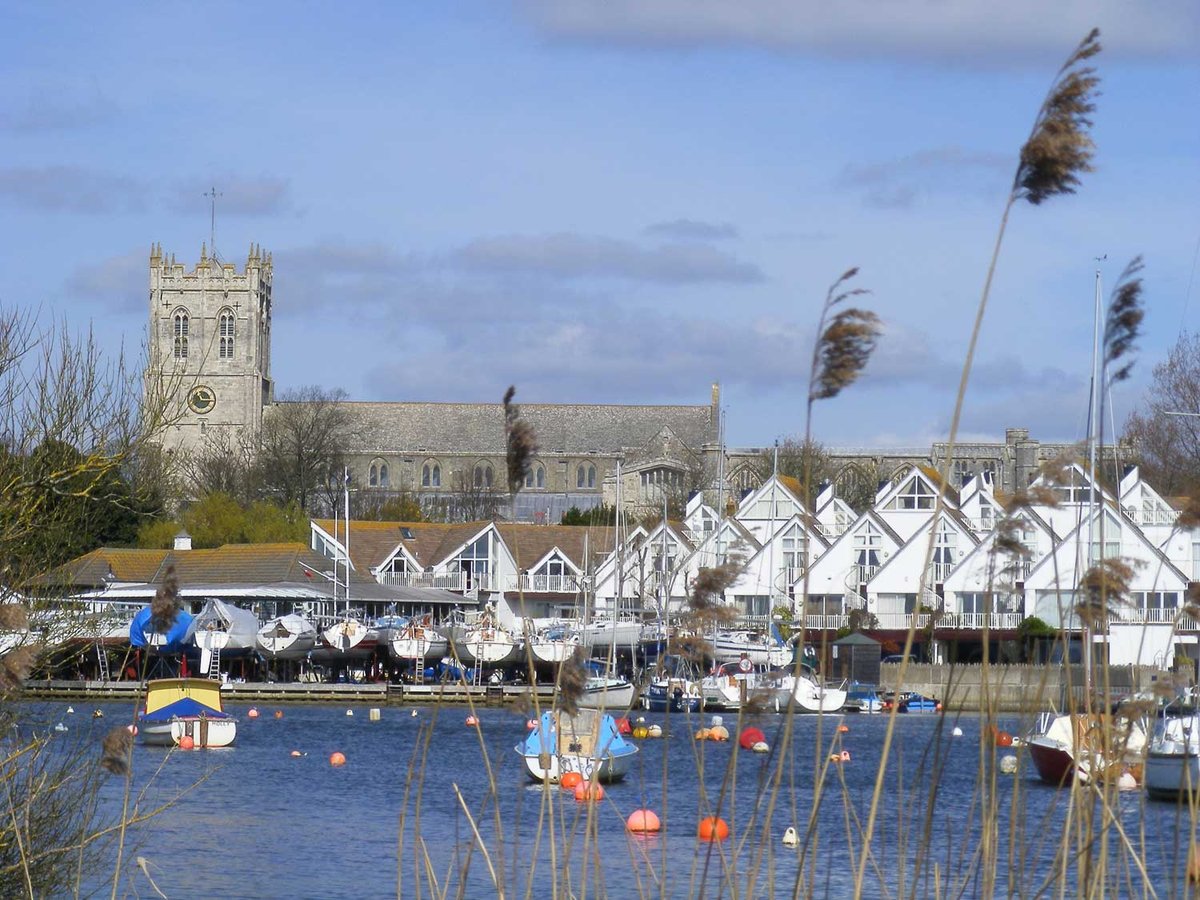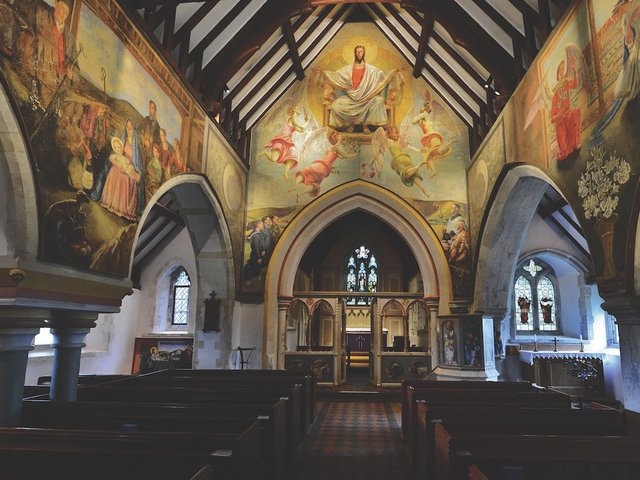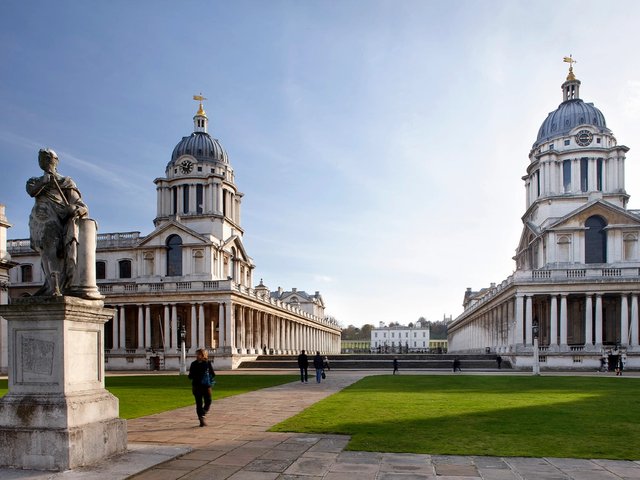“When a church has been pulled down, the country seems empty or is like a necklace with a jewel missing,” the poet John Betjeman said. As well as an intrinsic feature of the landscape, parish churches in the UK are art-filled architectural testaments to a rich and varied history from the Anglo-Saxon era to the present.
Nearly half of England’s Grade I-listed buildings are churches. They house treasures ranging from sculpture and ornate carvings to stained-glass windows and historic burial grounds. Yet many are in danger, with leaking roofs, draughty and damp interiors and crumbling masonry. England’s Heritage at Risk Register lists 959 churches, chapels, meeting houses and cathedrals.
A recent decision by the government to cut the funding available to protect church buildings threatens to exacerbate what Claire Walker, the chief executive of the National Churches Trust, describes as Britain’s biggest heritage crisis.
Gordon Brown’s grant scheme
“Listed churches make up some of the nation’s most important buildings and are filled with art,” Walker says. “Most churches are free to enter and attract visitors from all over the world. The future of church buildings is our biggest heritage crisis and a national plan by the government, the heritage sector and managers of Christian buildings needs to be created to ensure they are here for future generations to enjoy.”
The only regular government support churches receive is the Listed Places of Worship Grant Scheme, which allows them to reclaim the 20% in VAT spent on repairs. It was first introduced in 2001 by Chancellor Gordon Brown, whose father was a minister in the Church of Scotland. The programme has been renewed by every government since and, over the past 24 years, more than 13,000 places of worship have benefited.
But this year, the first Labour government since Brown’s slashed the budget to £23m from £42m and set a cap of £25,000 per building, putting many larger projects out of pocket. It also extended the programme for one year only, casting doubt on its future after March 2026.
If a building is not maintained, damp and rot can spread. “This puts the heritage inside at huge risk from water damage or falling masonry or plaster,” Walker says. “Hundreds of years of history, irreplaceable art can be destroyed, all because of a lack of support to keep the building in good repair.”
Call to eliminate funding cap
The £25,000 cap affects any project costing more than £125,000, which includes most medium-sized and once-in-a-generation projects, such as repairing a roof. The Church of England is urging the government to eliminate the cap and make the programme permanent, rather than creating year-to-year uncertainty.
“The scheme has been a real lifeline for more than 20 years and many churches and cathedrals emphatically rely on it,” says Emily Gee, the director of cathedral and church buildings at the Church of England. “Historic church repair projects are often complex and take time to plan, which is why church communities need that long term assurance. Without it, there’s a real threat to the sustainability of these vital heritage assets that have served people for centuries—and still do.”
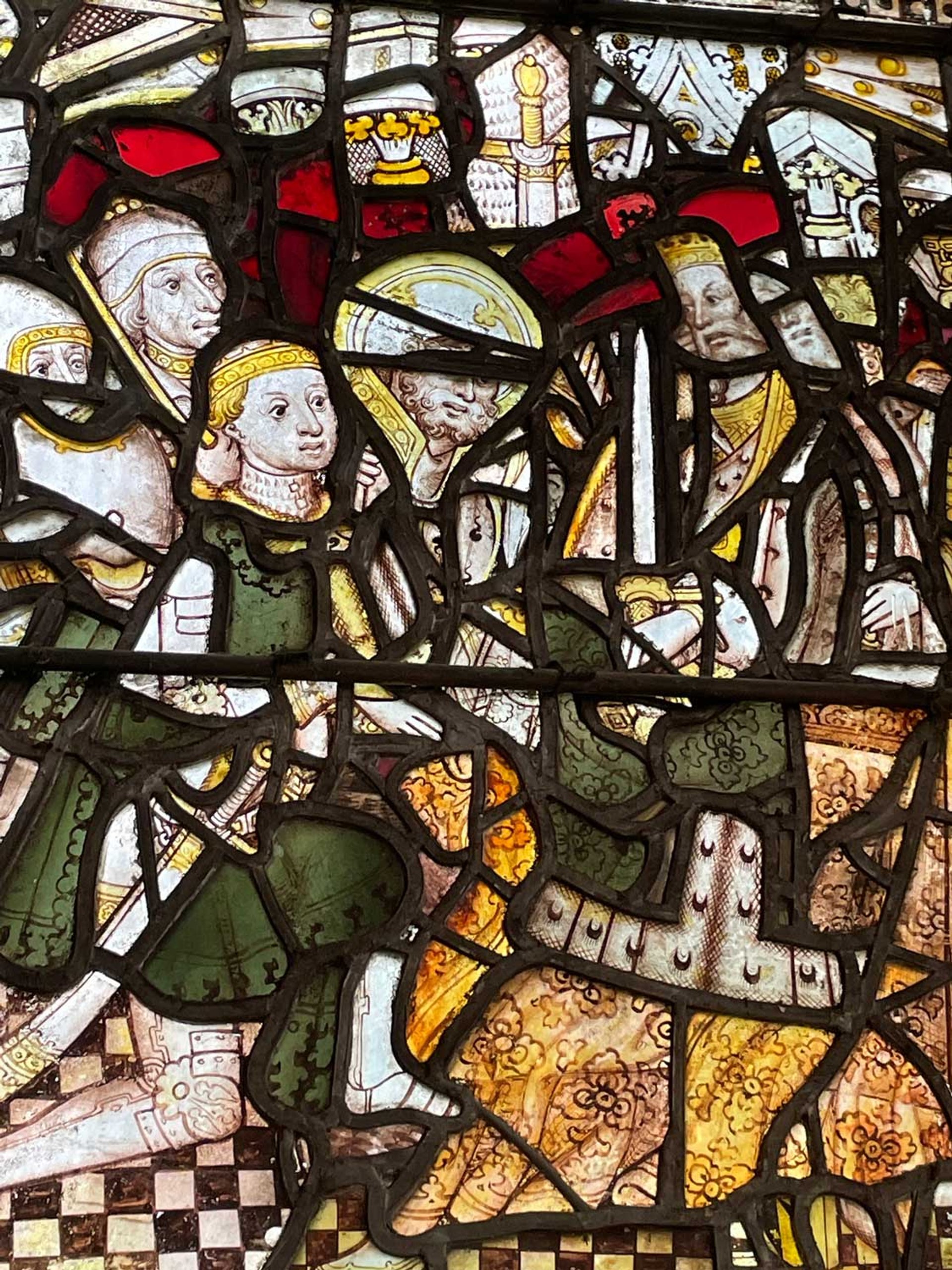
Medieval stained glass at St Mary Magdalene, Newark-on-Trent, Nottinghamshire
Courtesy St Mary Magdalene
Three English churches in urgent need of repair
St Mary Magdalene, Newark-on-Trent, Nottinghamshire
One of the largest parish churches in England, St Mary Magdalene is currently closed due to the urgent need for essential maintenance. The Grade I-listed 12th-century structure is home to some of the oldest stained glass in the country (dating back to the 14th century). It also houses the first treasury in an English parish church, containing a silver chalice dating from 1641 that is said to have been used by King Charles I to take communion. Other treasures include an Adoration of the Lamb mosaic dating from 1912. The mosaic, above a beautifully sculpted 15th-century sedilia, is based on the Hubert and Jan van Eyck triptych at St Bavo’s Cathedral in Ghent.
Work is underway to replace the leaky roof, renovate external stone masonry, and clean and repair stained glass. Funds of £3m were raised through grants from the National Lottery Heritage Fund, Historic England, the Church of England, the UK Shared Prosperity Fund, the National Churches Trust and the Wolfson Foundation. But the government’s new cap of £25,000 for VAT relief has punched a huge hole in the budget.
“The announcement of the reduction of the grant scheme was devastating news for us,” says Anna Herbert, the church’s heritage and visitor experience manager. “We are part way through a multi-million-pound project and have been left with an unanticipated funding gap which we are struggling to fill. This thoughtless decision by the government has left us potentially not being able to complete vital aspects of the project, and is putting at risk a nationally important building, and the incredible collection inside.”
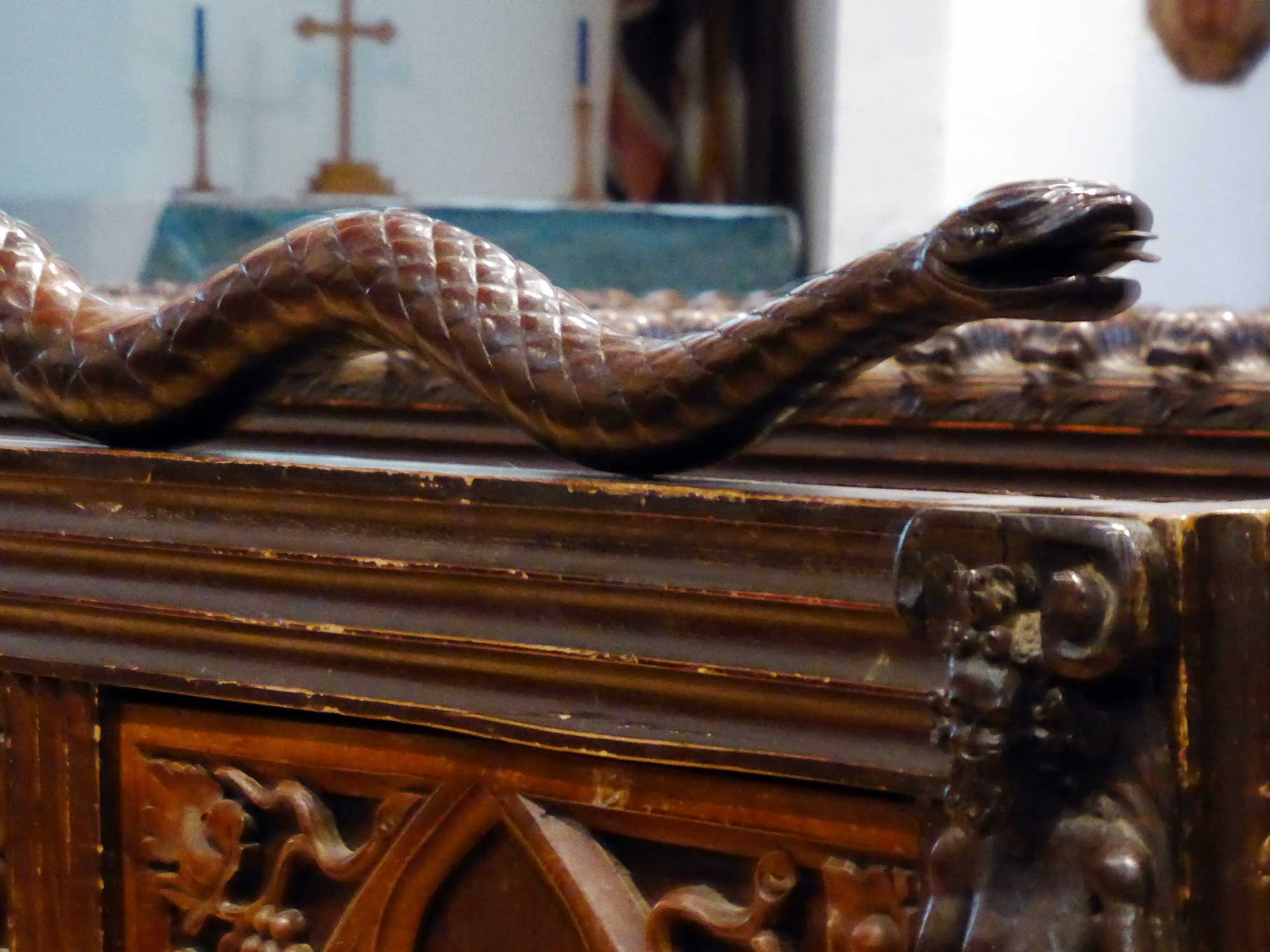
Serpent carving at St Leonard, Old Warden, Bedfordshire
Courtesy St Leonard
St Leonard, Old Warden, Bedfordshire
St Leonard is a Grade I-listed church with origins in the 12th century. Part of the tower battlements were repaired last year after they collapsed, but the church remains on the Heritage at Risk Register. A recent inspection found £500,000 of work is needed to tackle damp and preserve unique Flemish wood carvings commissioned by Anne of Cleves for one of the houses she lived in after her divorce from Henry VIII. The carvings are set across three panels depicting symbols of the Duchy of Cleves, replicated in stone on her tomb in Westminster Abbey. Previously thought to be Victorian copies, a dendrochronologist has now determined that the wood dated from the 1530s.
“This is all a very heavy burden for smaller, more rural parishes,” says Madeline Russell of St Leonard’s Parochial Church Council. “I sincerely hope that the proposed withdrawal of the scheme does not lead to the deterioration of these wonderful buildings or even their closure. It also means that grant-giving bodies will now be giving money to the government—not just to the projects they are trying to support.”
Christchurch Priory, Christchurch, Dorset
Christchurch Priory contains examples of almost every major style of English church architecture from Norman to Renaissance. The Norman nave is one of the finest in England, built by Ranulf Flambard before he was appointed Bishop of Durham in 1099—which explains its similarities with Durham Cathedral, which he completed. The nave has one of the largest single-stone roofs in the south of England, with beautiful original paintings on the 15th-century roof beams. The church also contains 39 ornately carved wooden misericords, or “mercy seats”, from the 13th to 16th centuries.
Reverend Canon Charles Stewart, the vicar of Christchurch, says the leaky nave roof and floor need to be repaired, as does damage to the roof beams and medieval paintings. “We also need to replace the Priory’s heating and lighting systems, both of which are antiquated, very costly to run and ruinous for the planet,” he says, adding that “with the nave roof project likely to cost more than £2m, the cap amount doesn’t begin to scratch the surface of what would help.”


